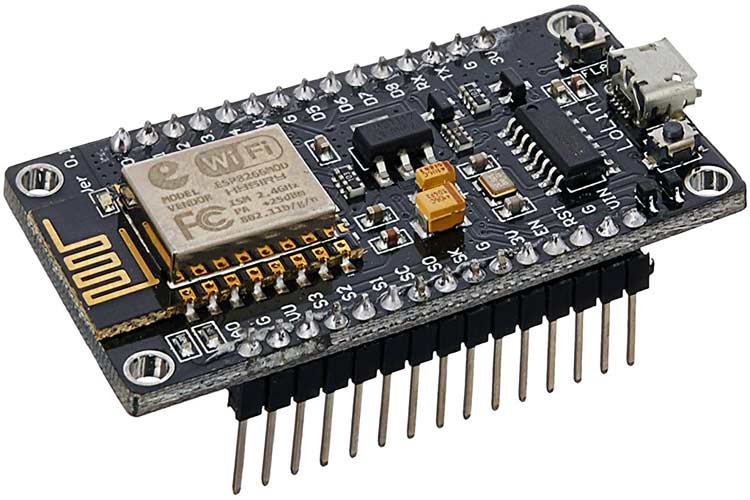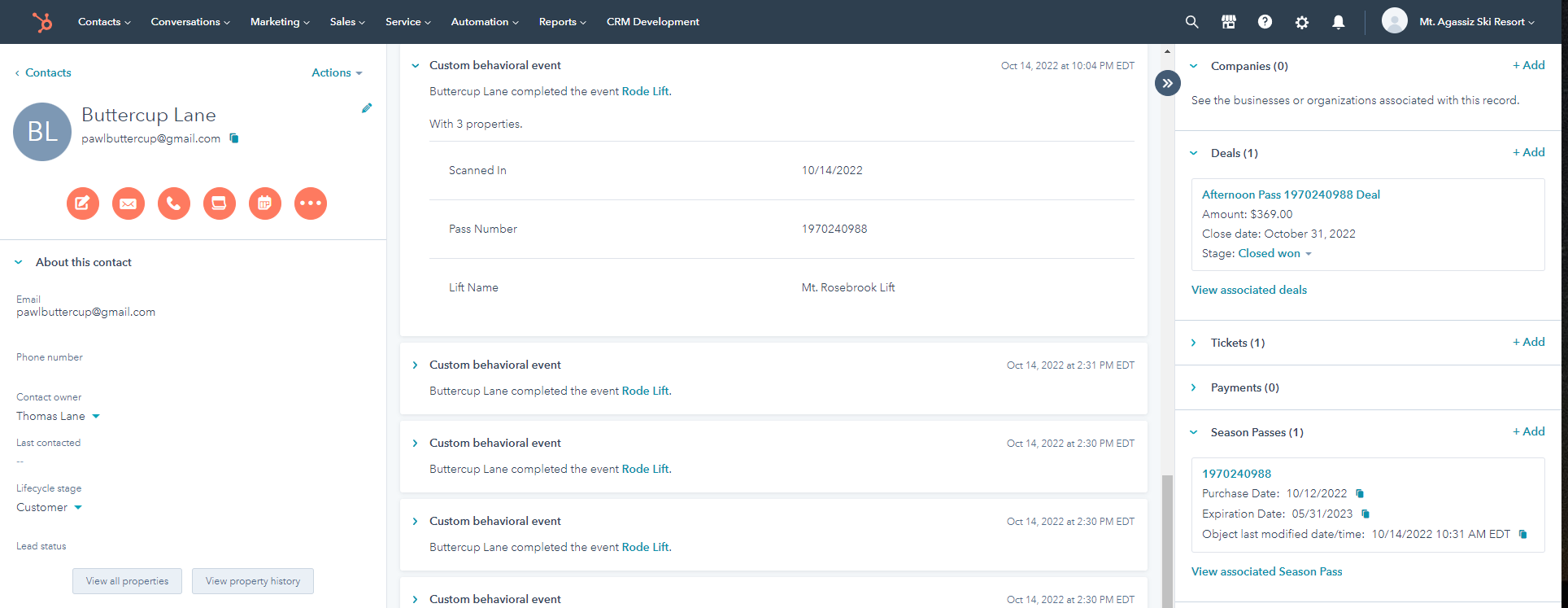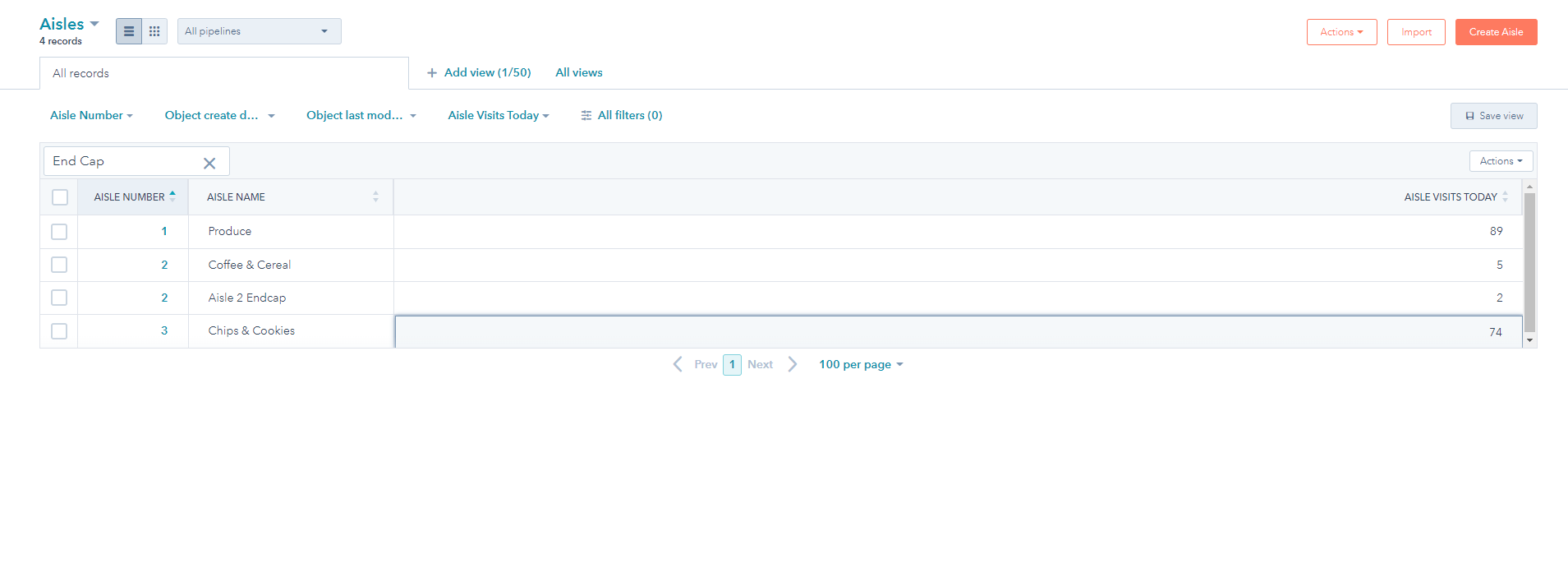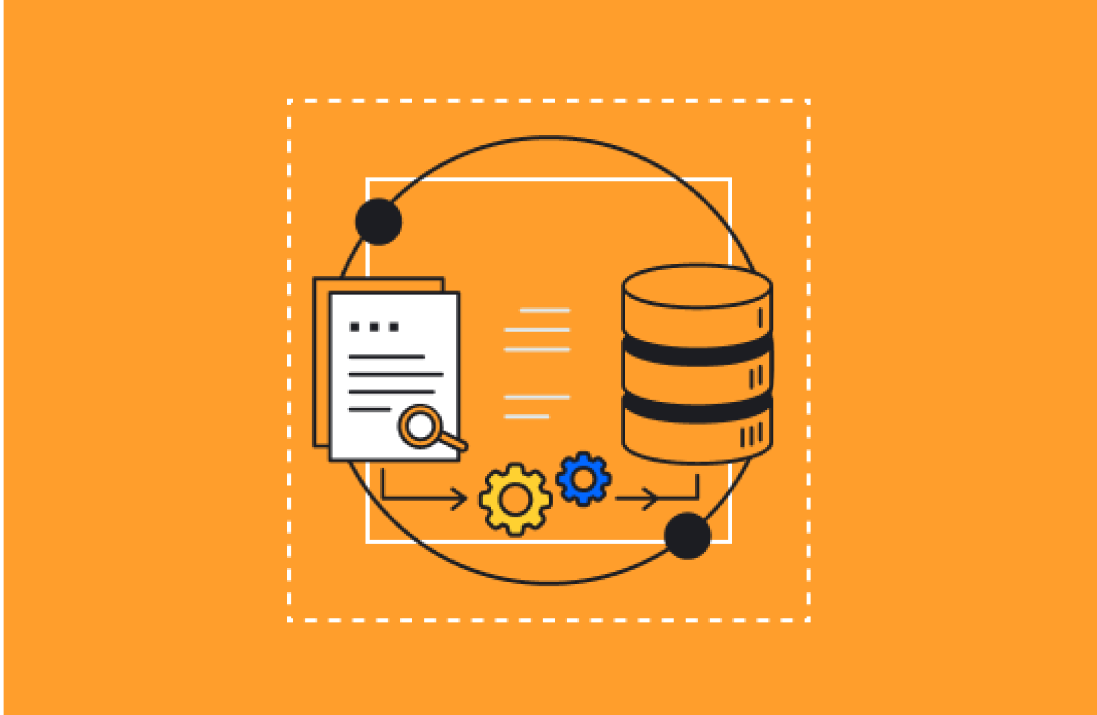HubSpot is fantastic as a standalone product - but what if we could expand all of that great functionality into realms of interactivity that other marketing platforms could only dream of? What if we could do it for the low price of $5.33?
Enter the world of microchips, micro processing & microcontrollers. You may have heard of some of these devices - the Raspberry Pi and the Arduino are arguably the two biggest "devices" in this area. Whether it's all kinds of ways to automate your home or emulating old computers from yesteryear, the sky is certainly no limit when it comes to these devices.
These devices are inherently powerful and allow you to do pretty much anything - but we want to take a step back from these devices and look at a microchip in particular - the ESP8266. The ESP8266 is (as of this writing) a $5.33 microchip that is very small (roughly 1 inch in length) with support for both low-level and scripting languages such as Python and the Arduino IDE that allows developers to do some pretty insane stuff.

Picture from Components101
The ESP8266 is a powerhouse in the world of microchips for a few reasons. The biggest one is one you can deduce from the picture above - a dedicated chip for handling TCP/IP calls via WiFi! This is immensely powerful and opens the doors, so to speak, for all kinds of ways to utilize the data both inside and outside of HubSpot in new unique ways. And while the ESP8266 supports being an access point of its own, it's the ability of the little chip to connect to 2.4ghz WiFi endpoints that really elevates it to the next level.
As a quick aside, I do want to also mention the ESP8266's bigger and younger brother - the ESP32. The ESP32 is bigger and better than the ESP8266 in every way, featuring a faster processor, SRAM and flash memory, Bluetooth support and a handful of sensors built in (such as touch, temperature & hall sensors) - but it might be overkill for what one would want accomplished. Luckily, the price of a ESP32, as of this writing, is $5.96 so even if one wanted to experiment with those added features you're still not breaking the bank!
Hopefully by now your brain is starting to run with ideas for implementing the ESP8266 and/or the ESP32 into your own use cases. But, we wanted to highlight a few use cases of how you can interact with HubSpot via these devices to give you loyal readers a nudge in the right direction. Let's get started!
Barcode Scanning
Perhaps the first place we started with experimenting with the ESP8266 was in the realm of barcode scanning and redemption. For our example, we operated around the idea of season passes and lift tickets at a ski area that require scanning in tickets for several reasons - one of which is validation. But our minds started to run from this simple example...what kind of data could we capture that we could use for marketing within HubSpot from this ability to scan?
The first goal of course was to get barcode scanning to work. We started by creating a way of generating a barcode and/or QR code that contained some kind of reference back to the user in HubSpot. In our case, the QR code contains the users Record ID which allows us to directly tie back into the user object. With our barcode in hand it was time to get to the scanning portion of this.
This is where the ESP8266 came in. One of the great features of microchips in general is the ability to connect and utilize external input and output devices to collect data. This includes sensors, displays, motors and much much more. To accomplish barcode scanning, all we had to do was hook up a simple barcode/QR scanner such as the GM65 to the breadboard and wire the ESP8266 up to look for any voltage change from the scanner and then captures the sent in data, sending the data up to HubSpot via a API PUTS call to the users profile - recording exactly where and when it was scanned.
 We can see that my dog Buttercup just absolutely loves the Mt. Rosebrook Lift and Trails.
We can see that my dog Buttercup just absolutely loves the Mt. Rosebrook Lift and Trails.
Some of those answers lied in ideas such as seeing what lifts and trails the ticket had been redeemed on so far, allowing us to do specialized marketing and e-mail blasts targeted towards very specific types of skiers. Let's say we had the ability to see if a skier had scanned into the Bunny Hill exclusively and we wanted to push ski lessons on them - we now had that ability and that data all within HubSpot! Pretty amazing.
Grocery Store Metrics
Let's say you own and operate a grocery store that actively runs sales. One of the important metrics with that is the idea of location of the sale products to facilitate the shopper either interacting or purchasing the product on display. The "issue", so to speak, is that shelf space is insanely valuable in a grocery store and you do not want to throw off your sales per square foot without doing some research first. How do you properly do that research and find the sweet spot for the sale? Typically, you just run the sale at a set position and examine the sales results from it. That takes at least a few days. But what if we could get that data immediately in a useful way? Enter the ESP8266 and HubSpot.

Picture from Adafruit.
Okay, this one is a little bit out there but overall cool nevertheless. Using the ESP8266 and a piece of $4.95 conductive nylon fabric we hooked to the bottom of a floor cling, we can now immediately retrieve data revolving around the idea of a shopper standing in front of the sale display. That's pretty amazing you think, but how does it work?

Picture of this Floor Cling from NewTechDisplay.Com
It's pretty simple in actuality. The conductive fabric triggers a voltage change to the ESP8266 whenever someone steps on it. The ESP8266 records notice of the voltage change and once it sees the voltage turn off again, it calls a PUTS request to a HubSpot custom object assigned to that particular ESP8266 - or in the case of our grocery store, the aisle - and updates a property dedicated to visits that day. Now we have a live view of what is happening and where.
 Dang, produce sure is popular at this store!
Dang, produce sure is popular at this store!
Of course, fellow marketers are probably already thinking of all the extra cool uses this data brings. We can see that people who visit the Aisle 1 Endcap in a meaningful manner (i.e. stepped on the capacitive fabric that the ESP8266 records) most likely skipped past Aisle 2's Endcap because they went directly to Aisle 3 instead. This lets us know our flow of traffic and what items seem to be most important to our consumers. The world of real life data reporting has now entered HubSpot.
Probably the Stupidest Idea Ever
This wouldn't be an Aptitude 8 blog post if we didn't leave you with a project that was both bats--t crazy yet totally feasible within HubSpot and utilizing the ESP8266. Let me introduce you to THE CONDUCTOR!

I assure you, I drew this and not a 5 year old.
You might be wondering what you're looking at here and I'll just come out and say it: You're looking at the future of audio animatronics. Well, kinda. You may or may not have heard that the team at A8 Labs is working on an Events add-on to HubSpot. It will allow the ability to manage in-person and digital events natively in HubSpot. More to come on that in a later post but know that it is already shaping up to be quite amazing.
Anyhow, with the plethora of existing and new data that HubSpot and this new add-on will collect, the team on the Aptitude 8 side started to think of interesting and frankly, funny ways of using that data that will now be collected and available. The idea that came up immediately, at least to this self-proclaimed theme park aficionado? An audio animatronic that greets users upon entering the venue. That's cool, we thought. But how do we make it work?
Simple! Once you have your robot in place and decorated, all you would need to do is decide how to capture the following:
- Who walked by the robot
- From there, you want to know the name of this person.
- Any other scary information you want the robot to know.
We've covered ways of gathering this information above, but there are also ways to be more efficient with this process including automation. This means that the users aren't forced on scanning something next to the robot. Our trusty friend the ESP8266 will be present of course, but how do we see who is nearby and even more perplexing, how do we know who that is?
Again, this is where the ability of the ESP8266 to interface with other I/O components really pays off. Since we know each event attendee will have some form of item that will grant them access to the event - whether it be a ticket with a barcode, a RFID embedded pass, or some kind of magical wristband that stores information about the ticket including patron information. Coupled with a high power 13.56MHz RFID/NFC reader, we can access any kind of information from HubSpot now!

I've seen this type of device before.... Picture from AdaFruit
So, our next solvable question is "How do we know when someone walks by the robot?". Well, we know there is are a metric ton of ways to sense data and send that signal back to the ESP8266. But in our case, we would likely use something such as a Laser Break Beam Sensor which detects when someone walks through the laser beam, causing it to send a signal to the ESP8266 telling it that someone is there. Very cool.
So we have our input and our plan:
- When the laser beam breaks, send a signal to the ESP8266 that someone is there.
- The ESP8266 then turns on the RFID/NFC scanner.
- If the RFID/NFC scanner detects a wristband, grab the data off of the wristband (the HS users Record ID) and send it back to the ESP8266.
- The ESP8266 then calls the HubSpot Contacts Search API and searches for the information of this user including First name and where they're from. We can also do a PUTS request and record something about the user at the same time if wanted.
- The ESP8266 then formulates this information and sends it to the robot and an Arduino, which controls the movement of the robot and the voice of the robot (essentially, it takes the name and sends it to a text to voice AI generator, similar to Voicemaker) respectively.
- The robot reacts accordingly, speaking the First name of the guest (and home location if wanted), and doing some kind of waving movement via servo motors hooked up and controlled by the ESP8266.
All of this is very possible and - besides the robot itself - relatively economical. Better yet, just think of the reactions from your event patrons! Amazing. Not to mention all of the extra marketing data you could get off of this such as seeing what type of person and where they're from interacted with the robot or even entered the event this way!
In Recap
Overall, we have described some pretty crazy ideas overall, but our goal was to spark the mind and empower our readers to think of their own great use cases for this little piece of technology. That's also not to say that the ESP8266 is the end all be all of this technology. There is a berth of other microchips, microcontrollers and more that do unique and cool things, and as mentioned above, the real power comes in when you combine these pieces of technology. If you have time, take a look at this article listing the Top 10 Popular Microcontrollers (our boy the ESP8266 is proudly on there) or explore the AdaFruit website for new ideas.
Have a great idea but don't know the best way to execute on it? Get in touch with us here at Aptitude 8. We are more than happy to talk through the issue and figure out a way to implement it!





